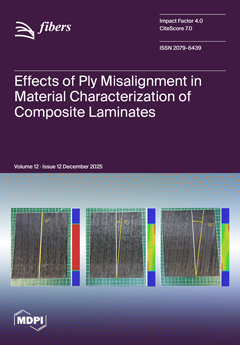Recycling upholstery textiles is challenging due to the complexity of materials, which often include a mix of fabrics, foams, and adhesives that are difficult to separate. The intricate designs and layers in upholstered furniture make it labor-intensive and costly to dismantle for recycling.
[...] Read more.
Recycling upholstery textiles is challenging due to the complexity of materials, which often include a mix of fabrics, foams, and adhesives that are difficult to separate. The intricate designs and layers in upholstered furniture make it labor-intensive and costly to dismantle for recycling. Additionally, contaminants like stains, finishes, and flame retardants complicate recycling. Despite these difficulties, recycling upholstery textiles is crucial to reducing landfill waste and conserving resources by reusing valuable materials. It also helps mitigate environmental pollution and carbon emissions associated with producing new textiles from virgin resources. The presented research aimed to establish the feasibility of incorporating textile fibers from waste artificial leather fibers from the upholstery furniture industry into the structure of high-density fiberboards. The bulk density of samples with wood fiber was 28.30 kg m
−3, while it was 25.77 kg m
−3 for textile fiber samples. The lowest modulus of elasticity (MOE) was 2430 N mm
−2, and it was 3123 N mm
−2 for the reference sample. The highest bending strength (MOR) was 42 N mm
−2, and the lowest was 27.2 N mm
−2. Screw withdrawal resistance decreased from 162 N mm
−1 in the reference sample to 92 N mm
−1 with 25% artificial leather fibers. The internal bond (IB) strength ranged from 1.70 N mm
−2 (reference) to 0.70 N mm
−2 (25% of artificial leather fibers content). Water absorption ranged from 81.8% (1% of artificial leather fibers) to 66% (25% of artificial leather fibers content). It has been concluded that it is possible to meet the European standard requirements with 10% addition of the artificial leather fiber content. This approach positively contributes to carbon capture and storage (CCS) policy and mitigates the problem of such waste being sent to landfills. The research shows that while selected mechanical and physical parameters of the panels decrease with a rising content of recycled textile fibers, it is possible to meet proper European standard requirements by adjusting technological parameters such as nominal density.
Full article





